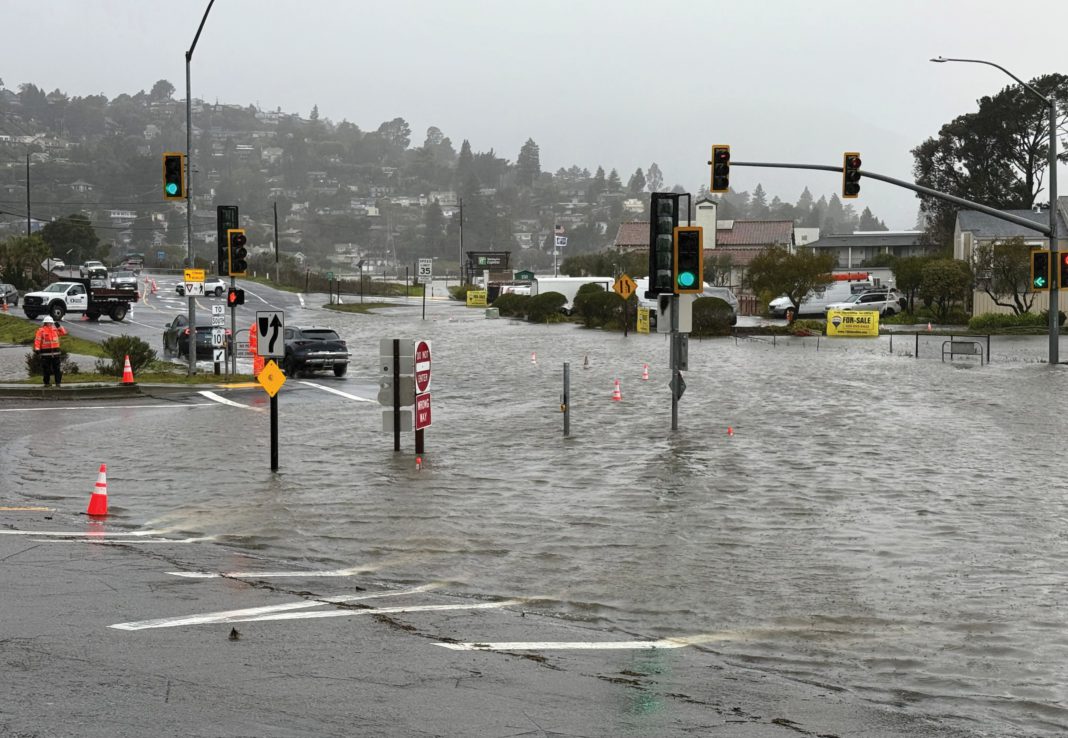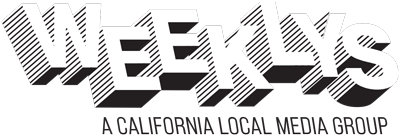Marin, one of the most expensive housing markets in the country, desperately needs more affordable housing. But is the county desperate enough to allow development in flood zones?
Yes, according to Sarah Jones, director of the Marin County Community Development Agency. And placing 32 units of affordable housing at 150 Shoreline, in the middle of Tam Junction’s flood zone, is preferable to building deeper into Tam Valley, which has fire risks, she said in a meeting on Feb. 5 with reporters from the Pacific Sun and Marin Independent Journal.
Amy Kalish, the Tam Design Review Board chair, acknowledges the difficulty of finding safe housing sites in the Tam Valley area. Still, she believes constructing affordable housing in fire and flood zones are both bad choices, especially for low-income residents.
“It’s like asking, ‘Do you want to be electrocuted or hung?’” Kalish said in an interview. “Approving affordable housing in areas that shouldn’t have any housing is a bad mistake.”
On Feb. 11, the Marin County Board of Supervisors held a hearing and unanimously approved an agreement that obligates the county to expedite the design review process for 32 affordable housing units at 150 Shoreline, located just off Highway 101, next to the Holiday Inn and Floodwater restaurant.
The agreement shifts those 32 units from a controversial affordable housing project at 825 Drake Ave. in Marin City, currently approved for 74 units. The two-site plan reduces the Marin City project to 42 units, yet it creates another controversial project in a Tam Junction flood zone.
Most who spoke during the hearing’s public comment period were against one or both projects. Clearly, their perspectives held no sway with the supervisors.
Jones said the developer, The Pacific Companies, could proceed with the original Marin City plan without the board’s approval, which is precisely what the county wants to avoid.
The saga began in 2020 when the developer’s partner received a ministerial (non-discretionary) review for a five-story, 74-unit affordable housing project in Marin City. Under Senate Bill 35, state legislation passed in 2017 to address California’s housing shortage, a local government that has not met state-mandated housing production goals must provide a streamlined approval process for multi-family developments. At the time, Marin County had not met its objectives.
However, Marin City, a historically Black community, has more affordable housing than any other area in the county. Most residents were unhappy about the project, maintaining the county was continuing its racist pattern of ignoring Marin City voices.
Save Our City, a group of Marin City residents and supporters, has been battling the county and developer—even filing a lawsuit—to stop the project entirely. In August 2023, Caleb Roope, CEO of The Pacific Companies, offered a two-site settlement to Save Our City, which would have substantially reduced the number of units at 825 Drake.
The group rejected it for several reasons, including that the site is in a state-designated high-fire hazard zone, the area is prone to flooding, and there is only one road into and out of Marin City. Traffic, parking and children’s safety are also concerns, as the community’s only public park is across the street from 825 Drake. And the five-story building would cast a literal shadow over the existing two-story, low-income senior housing complex just yards away.
In the meantime, Jones said that the county discussed with Roope acquiring a second site and decreasing the size of the Marin City project because of “inequities” and the community’s history.
“The Board [of Supervisors] came to understand how grievously harmful this project felt in Marin City,” Jones said. “That is really why we worked with the developer to make these changes.”
According to the assessor’s office, in May 2024, The Pacific Companies closed on the Shoreline property, paying $1.8 million for the vacant lot.
The county announced in August that the developer had applied to rezone 150 Shoreline, which would provide a streamlined approval process with no discretionary reviews. The supervisors were scheduled to vote on the issue in October, but it was removed from the agenda when Save Our City won their legal action that same month.
A Marin County Superior Court judge reversed approvals for $40 million in tax-exempt bond financing for the Marin City project. After the ruling, Roope told the Pacific Sun that it placed him in a challenging position, nevertheless he planned to continue developing the five-story, 42-unit building at the 825 Drake site. He would also shore up plans for the four-story, 32-unit project in Tam Junction.
In November, The Pacific Companies applied for a design review on the 150 Shoreline proposal, taking the rezoning plan and non-discretionary review off the table.
Jones explained that it is easier to go through the design review process than rezoning, adding that the two-site agreement approved by the Board of Supervisors assures the developer that the county wants to move forward.
The 150 Shoreline parcel, at just over half an acre, is currently approved for 21 units, Jones said. However, California’s “Density Bonus Law” allows affordable housing developers to increase the number of units. If all goes as planned, The Pacific Companies will build 32 units.
“The developer can request waivers for anything that makes that density feasible,” Jones said. “And the only basis for us to deny a waiver is health and safety.”
Indeed, The Pacific Companies’ application to the county requests three waivers: increasing the building height limit from 25 feet to 58 feet, five inches; increasing the maximum floor area ratio from 0.35% to 1.3%; and reducing the required parking from 12 to eight spaces.
Interestingly, the Tam Design Review Board will review the project on March 5, almost a month after the Board of Supervisors approved the two-site plan and speedy design review for the Tam Junction development. The supervisors also allocated $99,544 for an environmental consultant to add 150 Shoreline to the environmental impact report in the county’s state-mandated housing element plan.
Kalish, chair of the Tam Design Review Board, is puzzled by what she says is an unusual process.
“The way it’s supposed to happen is first, there’s a design review process by the Tam Design Review Board, and then that goes to the County Planning Commission,” she said. “Once the Planning Commission reflects on it, they give information through county staff to the Board of Supervisors.”
Changing the order of the meetings and allowing expeditious design review raises concerns that the Board of Supervisors won’t consider the Tam Design Review Board’s comments on the Shoreline project. Issues with the developer’s plan already exist, according to Kalish, who points to drawings of the proposed four-story building with windows going to the ground. Another is “livability.” How does a resident leave the apartment building safely when the area floods for extended periods during storm surges?
Meanwhile, Save Our City is still busy trying to thwart the 825 Drake project, although the developer recently finished grading the land in preparation for construction.
“We are working on enforcing the judgment to return the bond funds,” Marilyn Mackel, a Save Our City leader, said in an interview this week. “We do not want this development at 825 Drake.”
If the county ponders Marin City’s continuing fight against the development, it may want to seriously consider the public’s view on the 150 Shoreline project. Otherwise, history could repeat itself.











